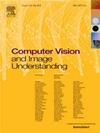可控介入放射成像的时间感知表征学习
IF 4.3
3区 计算机科学
Q2 COMPUTER SCIENCE, ARTIFICIAL INTELLIGENCE
引用次数: 0
摘要
介入放射成像(IRI)通过提供动脉和静脉血流的连续图像来评估脑血管解剖是必不可少的。在IRI中,采集过程中的低帧率(4fps)可能导致不连续和闪烁,而高帧率则与增加的辐射暴露有关。然而,在复杂的血流条件下,有必要在第二次采样时将帧率提高到15 fps。以前的方法完全依赖于固定帧插值来减轻不连续和闪烁。然而,由于帧率的限制,它们在解决复杂血流条件下产生的高辐射问题时无效。在本研究中,我们引入了一种称为时间可控网络(TCNet)的新方法,该方法首次将可控帧插值技术创新性地应用于IRI。我们的方法有效地解决了低帧率引起的不连续和闪烁问题,并减轻了第二次采样期间与高帧率相关的辐射问题。我们的方法强调通过时间感知表征学习(TARL)模块合成中间帧特征,并通过双边光流监督优化这一过程,以实现准确的光流估计。此外,为了增强对血管运动和呼吸细微差别的描述,我们引入了一个隐式功能模块,用于细化视频中的运动线索。我们的实验表明,TCNet成功地以临床合适的帧率生成视频,显著改善了血流和呼吸模式的重建。我们将公开发布我们的代码和数据集。本文章由计算机程序翻译,如有差异,请以英文原文为准。
Learning temporal-aware representation for controllable interventional radiology imaging
Interventional Radiology Imaging (IRI) is essential for evaluating cerebral vascular anatomy by providing sequential images of both arterial and venous blood flow. In IRI, the low frame rate (4 fps) during acquisition can lead to discontinuities and flickering, whereas higher frame rates are associated with increased radiation exposure. Nevertheless, under complex blood flow conditions, it becomes necessary to increase the frame rate to 15 fps for the second sampling. Previous methods relied solely on fixed frame interpolation to mitigate discontinuities and flicker. However, owing to frame rate constraints, they were ineffective in addressing the high radiation issues arising from complex blood flow conditions. In this study, we introduce a novel approach called Temporally Controllable Network (TCNet), which innovatively applies controllable frame interpolation techniques to IRI for the first time. Our method effectively tackles the issues of discontinuity and flickering arising from low frame rates and mitigates the radiation concerns linked to higher frame rates during second sampling. Our method emphasizes synthesizing intermediate frame features via a Temporal-Aware Representation Learning (TARL) module and optimizes this process through bilateral optical flow supervision for accurate optical flow estimation. Additionally, to enhance the depiction of blood vessel motion and breathing nuances, we introduce an implicit function module for refining motion cues in videos. Our experiments reveal that TCNet successfully generate videos at clinically appropriate frame rates, significantly improving the reconstruction of blood flow and respiratory patterns. We will publicly release our code and datasets.
求助全文
通过发布文献求助,成功后即可免费获取论文全文。
去求助
来源期刊

Computer Vision and Image Understanding
工程技术-工程:电子与电气
CiteScore
7.80
自引率
4.40%
发文量
112
审稿时长
79 days
期刊介绍:
The central focus of this journal is the computer analysis of pictorial information. Computer Vision and Image Understanding publishes papers covering all aspects of image analysis from the low-level, iconic processes of early vision to the high-level, symbolic processes of recognition and interpretation. A wide range of topics in the image understanding area is covered, including papers offering insights that differ from predominant views.
Research Areas Include:
• Theory
• Early vision
• Data structures and representations
• Shape
• Range
• Motion
• Matching and recognition
• Architecture and languages
• Vision systems
 求助内容:
求助内容: 应助结果提醒方式:
应助结果提醒方式:


